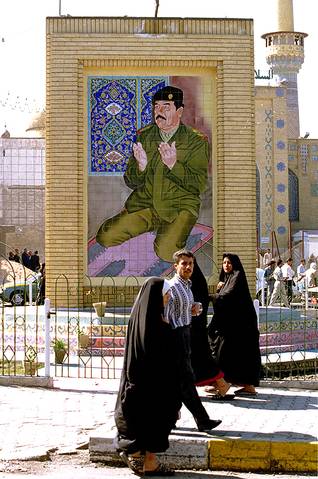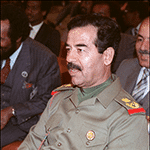Introduction

The new phase that began at that time was accompanied by a change at the top. On 16 July 1979, President Ahmed Hassan al-Bakr was ousted by his cousin Saddam Hussein. Under his leadership, Iraq had, since 1968, been transformed into a police state, and Saddam Hussein had become the most powerful man in the regime. During the 1970s he saw to it that all key military and political positions were awarded to his close relatives – three half-brothers, several cousins, and a brother-in-law; his sons Uday and Qusay followed later.
Tried and true friends from the party also received prominent positions. Their ethnic-religious background was more varied: not being a Sunni Arab was apparently no obstacle to being close to the centre of power; loyalty to the president was the all-important factor. Beginning in the late 1970s it is thus more consistent with the actual relationships of power to speak of the regime of Saddam Hussein than the Baath regime.
With its enhanced economic and political position at the end of the 1970s, based on extensive oil revenues and a monopoly on political power inside the country, it appeared that the conditions were ripe for an Iraq under Saddam Hussein to assume a dominant position in the region.
It was vital to keep the Kurdish and Shiite Arab opponents under control; during the internal conflicts, neighbouring countries had given support to Iraqi Kurdish guerrilla movements, and in the Islamic Republic of Iran the co-religionists of the Iraqi Shiites were now in power and were working to export their Islamic revolution.
The regime also hoped to compensate for several of Iraq’s vulnerabilities – such as its landlocked situation and its great dependence on a continued supply of water from Turkey and Syria – by taking advantage of this position of strength.
Militarily, this power politics rested on a massive army and a large arsenal of weapons, which included non-conventional weapons, such as the chemical weapons with which the Kurds were later threatened and then attacked. Iraq also began to develop biological and nuclear weapons. In exchange for oil dollars, the governments of both the Eastern Bloc and the West and businesses happily contributed to this military build-up.
In 1979, after the fall of the Shah and the formation of the Islamic Republic in Iran, a chance appeared to present itself for strengthening the position of Iraq in the region. Until then Iran, also a large producer of oil and itself heavily armed, had been one of the leading powers in the Gulf region, holding two-thirds of the world’s oil reserves.
Taking advantage of the confusion and chaos surrounding the change of power there, Saddam Hussein’s regime hoped to fill the regional power vacuum that had been created. Baghdad also had set its sights on the conquest of Khuzestan – an ethnically Arab province of Iran, bordering on the Iraqi province of Basra and the Persian Gulf – and on regaining full control over the Shatt al-Arab (after the humiliation of the 1975 Algiers Treaty ), which would eliminate Iraq’s landlocked situation.
Finally, Saddam Hussein hoped that, by involving Iran in a war, the new Islamic Republic would be weakened, and he could thus eliminate the encouragement the Islamic Revolution was undeniably giving to Iraq’s Shiites. Because of their shared fears about the export of this revolution, Iraq was assured of support, in any future conflict, from most Arab regimes and their Western allies, Tehran having further alienated itself from the West by taking hostage the staff of the US embassy. Moreover, Khuzestan was the Achilles’ heel of the Iranian economy, because it contained most of the country’s oil reserves and oil-industry facilities. If Iraq could take possession of Khuzestan, it would control oil reserves even greater than those of Saudi Arabia.
Saddam Hussein through the years






